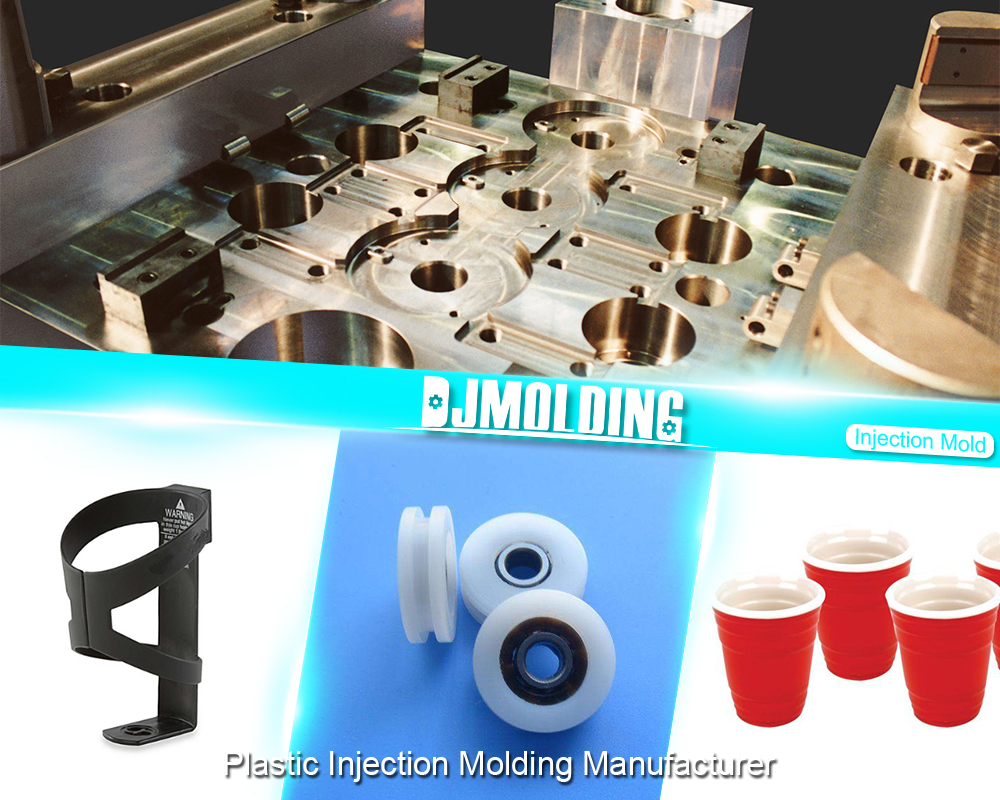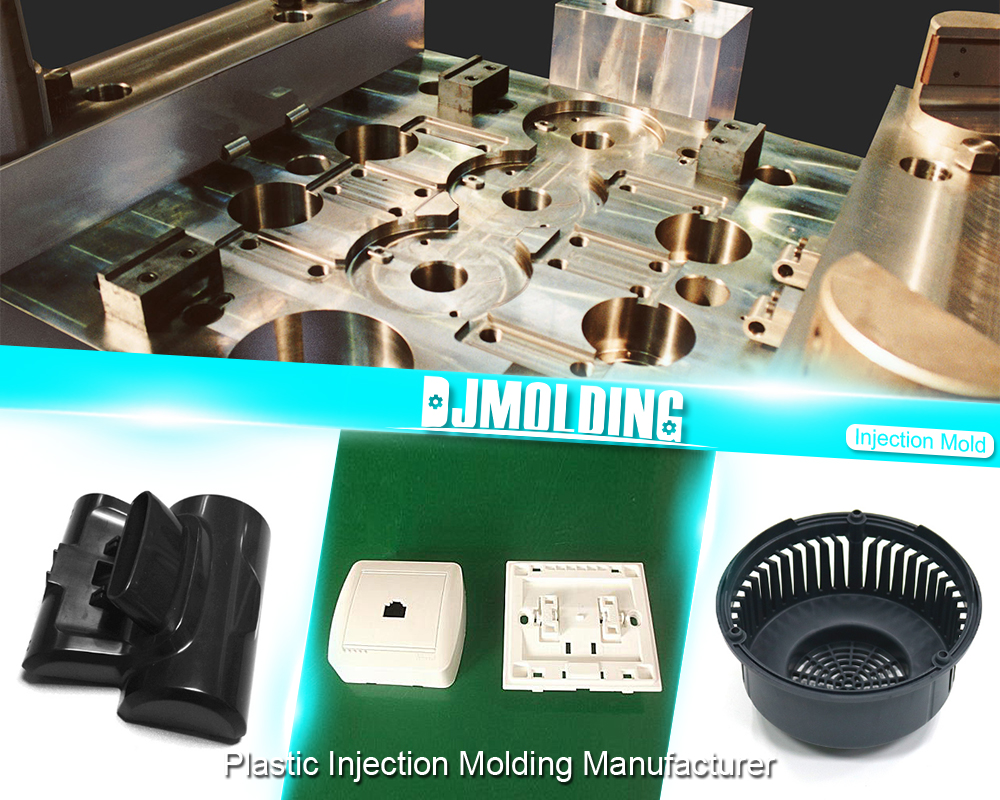Una descripción general del moldeo por inyección de bajo volumen
El moldeo por inyección es un proceso de fabricación popular que se utiliza para crear diversos productos plásticos.. Mientras que los fabricantes utilizan el moldeo por inyección tradicional para producir piezas grandes, ellos diseñan específicamente moldeo por inyección de bajo volumen para tiradas de producción más pequeñas. Este método ofrece numerosas ventajas., incluyendo costos más bajos y tiempos de respuesta más rápidos. Esta publicación analizará en profundidad el moldeo por inyección de bajo volumen., incluyendo su definición, proceso, materiales, y aplicaciones.

¿QUÉ ES EL MOLDEO POR INYECCIÓN DE BAJO VOLUMEN??
Definición y explicación
El moldeo por inyección de bajo volumen es un proceso de fabricación que utiliza tecnología de moldeo por inyección para producir pequeñas cantidades de piezas de plástico.. Este método es ideal para empresas que necesitan fabricar piezas pequeñas de forma rápida y rentable.. Puede utilizar moldeo por inyección de bajo volumen para diversas piezas de plástico., incluyendo viviendas, cubre, y cerramientos.
Beneficios de utilizar moldeo por inyección de bajo volumen:
- Rentabilidad: El moldeo por inyección de bajo volumen es rentable para producir piezas pequeñas.
- Tiempo de respuesta rápido: El proceso es más rápido que el moldeo por inyección tradicional., haciéndolo ideal para empresas que necesitan crear piezas rápidamente.
- Piezas de alta calidad: El moldeo por inyección de bajo volumen tiene piezas de alta calidad que son precisas y consistentes..
PROCESO DE MOLDEO POR INYECCIÓN DE BAJO VOLUMEN
El moldeo por inyección de bajo volumen es un proceso de fabricación que se utiliza para producir pequeñas cantidades de piezas de plástico de forma rápida y rentable.. El proceso consta de varios pasos.: diseño, creación de moldes, selección de materiales, moldeo por inyección, enfriamiento, Es un patrón o herramienta del producto por medio de inyección., y acabado. He aquí un vistazo más de cerca a cada etapa.:
fabricar controles hidráulicos Sistemas hidráulicos para automóviles
El primer paso en el moldeo por inyección de bajo volumen requiere diseñar un modelo 3D para producir la pieza.. Puedes crear la técnica mediante diseño asistido por ordenador. (CANALLA) software o escanear funciones existentes. El diseño debe ser preciso y detallado para garantizar que el producto final cumpla con las especificaciones..
Creación de moldes
Una vez que el diseño esté completo, Se crea un molde basado en la estructura 3D.. Típicamente, Los fabricantes utilizan metal para crear el molde., que consta de dos mitades que encajan entre sí para formar la forma de la pieza que pretenden producir.
Selección de materiales
The material used for low volume injection molding is selected based on the specific requirements of the part. Manufacturers consider strength, durabilidad, and temperature resistance when determining the material.
Moldeo por inyección
The selected material is heated to molten and then injected into the mold. The molten plastic is injected at high pressure to ensure that it fills the entire mold and forms the shape of the part.
Enfriamiento
After injecting the plastic into the mold, manufacturers cool it to solidify it. Cooling is critical to ensure the plastic retains its shape and does not warp or deform.
Inyección
Once the plastic solidifies, manufacturers inject the finished part from the mold. Manufacturers separate the two halves of the mold and remove the piece from it.
Finishing
After ejecting the part from the mold, we complete any necessary finishing touches. To enhance the appearance and functionality of the item, you can trim any excess material, apply a fresh coat of paint or coating, or add essential labels or markings.
El moldeo por inyección de bajo volumen process is cost-effective and efficient for producing small plastic parts. By following the steps of design, creación de moldes, selección de materiales, moldeo por inyección, enfriamiento, Es un patrón o herramienta del producto por medio de inyección., y acabado, manufacturers can produce high-quality parts quickly and with high precision.
Equipment used in the process
- Máquina de moldeo por inyección
- Molde
- Material feeder
- Cooling system
- Sistema de eyección
- MATERIALS USED IN LOW VOLUME INJECTION MOLDING
Types of materials commonly used:
- Thermoplastics are the most frequently used materials for low volume injection molding. Examples include polystyrene, Servicios de fabricación de paneles base de madera, and ABS.
- Goma de silicona líquida (LSR): Manufacturers use LSR for parts that require flexibility, durabilidad, and high-temperature resistance.
- Polyurethane (PU): Manufacturers use PU for parts that need flexibility and impact resistance.
- termoestables: Manufacturers use thermosets for features that require high-temperature resistance.
- Advantages and disadvantages of each material:
- Breve análisis de los requisitos de rendimiento del acero para moldes de inyección de plástico: Advantages include flexibility, durabilidad, and ease of use. Disadvantages include lower temperature resistance and susceptibility to warping.
- Goma de silicona líquida (LSR): Advantages include flexibility, durabilidad, and high-temperature resistance. Disadvantages include higher costs and longer curing times.
- Polyurethane (PU): Advantages include flexibility and impact resistance. Disadvantages include lower temperature resistance and higher prices.
- termoestables: Advantages include high-temperature resistance and durability. Disadvantages include longer curing times and difficulty in recycling.
APPLICATIONS OF LOW VOLUME INJECTION MOLDING
Low volume injection molding has a wide range of applications across various industries. This manufacturing process is beneficial for producing small quantities of plastic parts quickly and cost-effectively. Here are some examples of products made with low volume injection molding and the industries that commonly use this method:
Medical equipment components
Medical equipment requires precise and high-quality parts to ensure the safety and effectiveness of medical procedures. Low volume injection molding can produce these parts with tight tolerances and consistent quality, making it a popular choice in the medical industry.
Electronic housings and covers
The electronics industry requires custom housings and covers to protect and house electronic components. Low volume injection molding can produce these parts with high precision, making it ideal for producing electronic housings and covers in small quantities.
Automotive parts
The automotive industry requires various plastic parts for vehicles’ interior and exterior. Moldeo por inyección de bajo volumen can produce these parts quickly and efficiently, making it a cost-effective method for producing small quantities of automotive parts.
Consumer goods
Consumer goods such as toys, batería de cocina, and household appliances often require custom plastic parts. Low volume injection molding can produce these parts in small quantities, allowing manufacturers to test and refine their designs before moving to mass production.
Industries that use this method
Low volume injection molding is used in various industries because it produces high-quality plastic parts in small quantities quickly and cost-effectively. Here are some of the industries that commonly use this method:
Médico
Low volume injection molding is popular in the medical industry due to its ability to produce precise and high-quality medical equipment components.
Automotor
The automotive industry requires various plastic parts, and low volume injection molding is a cost-effective way to produce small quantities of these parts.
Consumer goods
Manufacturers of consumer goods such as toys, batería de cocina, and household appliances use low volume injection molding to produce custom plastic parts.
Electrónica
The electronics industry requires custom housings and covers to protect and house electronic components, making low volume injection molding a popular choice.
Aeroespacial
The aerospace industry requires lightweight and durable plastic parts, making low volume injection molding an attractive option due to its ability to produce high-quality parts quickly and efficiently.
Industrial
Various industries utilize low volume injection molding to manufacture equipment components and produce custom parts for machinery.

CONCLUSIÓN
Moldeo por inyección de bajo volumen is a cost-effective and efficient manufacturing process for businesses that need to produce small quantities of plastic parts. By understanding the benefits, procesos, and materials used in this method, companies can make informed decisions about the right choice for their needs. It is vital to use associated keywords to optimize content for search engines and ensure that the blog post reaches a broader audience. With its numerous advantages and diverse applications, low volume injection molding is a valuable tool for businesses looking to produce small quantities of high-quality plastic parts.
Para obtener más información sobre una descripción general de moldeo por inyección de bajo volumen,puedes visitar Djmolding en https://www.djmolding.com/low-volume-injection-molding/ para más información.
Artículo Original de: https://www.djmolding.com/an-overview-of-low-volume-injection-molding/


